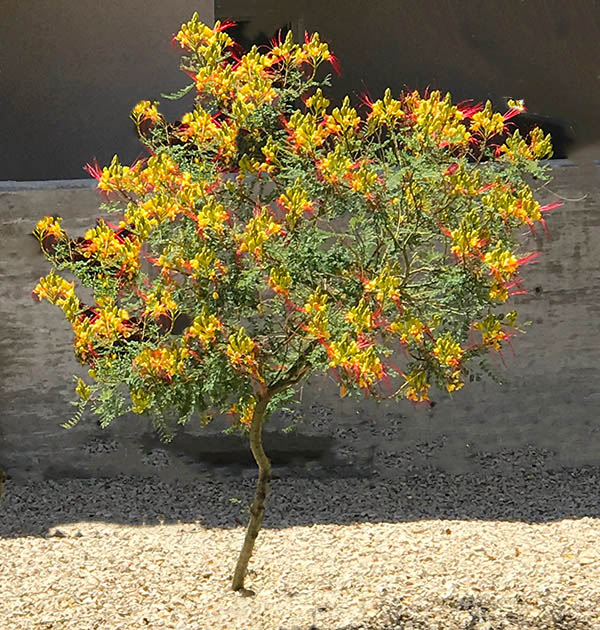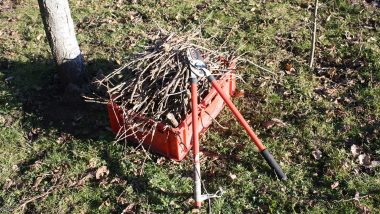Last updated on December 27th, 2024 at 08:01 am
The Yellow Bird of Paradise Plant (caespalpinia gilliesii) is a very drought-tolerant, hardy plant for the Southwest. It has large yellow flowers and striking long red stamens. It’s a great plant for rock or xeriscaping gardens.
It will grow to about 7 maybe 10 ft. tall and wide. It works great for a small screen or light hedge. Furthermore, it can take temperatures down to -10 Fahrenheit.
This plant is toxic to humans and animals. Do not ingest any part of the plant.
USDA zones 8-10.
The Yellow Bird of Paradise Plant
This is a great plant for those who want to plant it and forget it. Easy care no muss and very little water. The flowers are very showy, especially during the mid-spring season, and will until mid-summer.
The Yellow Bird of Paradise plant is a good xeriscaping plant for rock gardens. Add shorter drought-tolerant plants like lantanas and purple verbena plants in front for a spectacular spring color garden.
There is nothing to prune unless you want it shorter. It loves the long southwestern hot sun. Plant it in full sun and keep it away from too much shade.
It only needs an occasional fertilizer and can tolerate almost any type of soil. However, it will grow faster and have more blooms with well-composted soil.

Looking for the Redbird of paradise? It right here: Red Bird of Paradise
The Mexican bird paradise is another caespalpinia plant that looks very similar. Click for more information.
Learn more about this plant over at Missouri Botanical Gardens.
Additionally, there are several types of “Bird of Paradise plants. Check out the following post. The Difference between Bird of Paradise Plants
Got questions and or comments? Be sure to let us know below, we would love to hear your questions or comments.

Greenhouse Manager, Master Gardener, and Webmaster.
If you have any questions or enjoyed this post, feel free to share your thoughts in the comments below.



